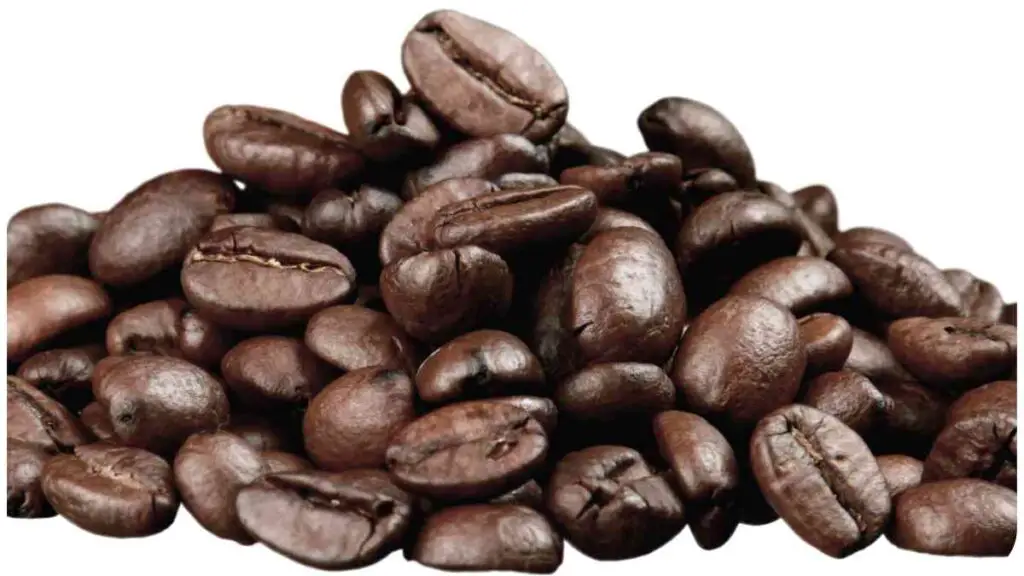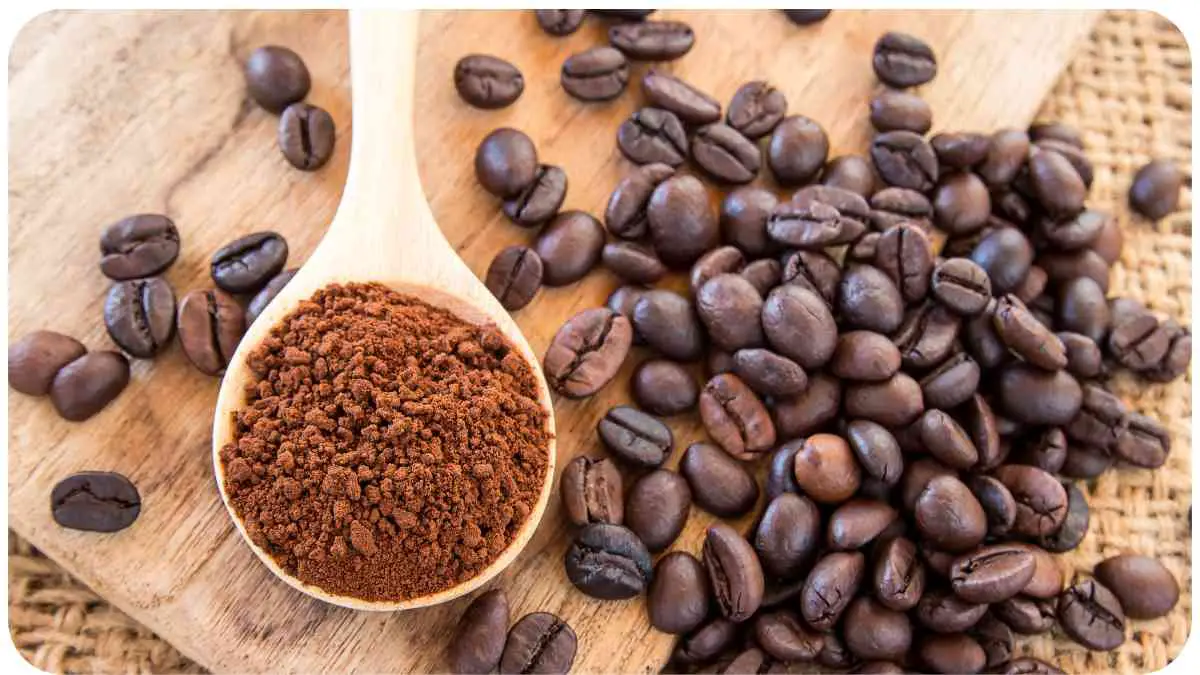As you savor that delightful cup of coffee from Caribou Coffee, have you ever wondered about the intricate science behind the caffeine content in those beans? The world of coffee is rich with complexities, and understanding the factors that contribute to caffeine levels can elevate your appreciation for your morning ritual.
| Takeaway |
|---|
| Caffeine levels in coffee are influenced by various factors, including bean variety, roast level, and brewing method. |
| Altitude and growing conditions impact caffeine accumulation in coffee beans. |
| Roasting and grinding processes play a role in determining caffeine content. |
| Understanding the chemistry of caffeine enhances your appreciation of its effects. |
| Different Caribou Coffee blends offer varying caffeine profiles for diverse preferences. |
| Caffeine sensitivity varies from person to person, and health considerations are important when consuming coffee. |
| Decaf coffee still contains trace amounts of caffeine, making it a suitable option for those seeking lower caffeine intake. |
| Roasting expertise impacts caffeine levels, with lighter roasts preserving more caffeine content. |
| Interpreting caffeine information on labels empowers you to make informed coffee choices. |
| The future of caffeine research promises to uncover more about its impact on human health. |
| Brewing techniques can significantly influence the taste and caffeine extraction of your coffee. |
| Coffee is a harmonious blend of science, artistry, and cultural significance. |
In this article, we’ll embark on a journey into the depths of coffee chemistry, exploring the nuances of caffeine content in Caribou Coffee beans. Whether you’re a curious coffee lover or an aspiring barista, let’s dive in and uncover the secrets behind the science.
Exploring sustainable coffee farming is crucial for the future of our beloved brew. Discover the intricacies and benefits in this Ultimate Guide.
Understanding Caffeine in Coffee Beans
Caffeine, Your A.M. Companion
Caffeine, the natural compound that gives coffee its energizing kick, has become synonymous with that burst of alertness we all crave in the morning. But its role goes beyond just a wake-up call. Caffeine is a natural stimulant that influences our central nervous system, enhancing focus and temporarily warding off drowsiness. Its presence in coffee beans serves as a defense mechanism against pests, yet its effects on humans are far more intriguing.
Variability in Caffeine Content
Have you ever noticed that different cups of coffee deliver varying levels of energy? This variability in caffeine content can be attributed to several factors, from the type of coffee bean to the brewing method used. No two coffee beans are exactly alike, and this uniqueness contributes to the distinct character of each cup.
Factors Affecting Caffeine Levels
Diving deeper, we uncover a symphony of factors influencing caffeine levels. The altitude at which coffee is grown, the specific bean variety, the roasting process, and even the grind size—all play a role in determining how much caffeine makes its way into your cup. The relationship between these factors is intricate, creating a puzzle that coffee experts are continually deciphering.
Uncover the environmental advantages of embracing sustainable coffee. Learn about the eco-friendly perks and surprises of choosing green beans in this insightful exploration: Surprising Benefits.
The Chemistry of Caffeine
Let’s venture into the world of coffee chemistry. Caffeine, a xanthine alkaloid, is found predominantly in the seeds (beans) of the coffee plant. It’s synthesized as a secondary metabolite and serves as a defense mechanism against herbivores. The molecular structure of caffeine resembles that of another compound, adenosine, which regulates sleep. By binding to adenosine receptors, caffeine tricks our brains into feeling alert and awake. This interaction initiates a cascade of biochemical reactions that result in heightened focus and energy.
Exploring Caribou Coffee Beans
Caribou Coffee: A Brief Overview
Caribou Coffee, known for its commitment to quality and sustainability, has gained a loyal following of coffee enthusiasts. Founded in 1992, the brand has continually crafted exceptional coffee experiences. But what sets Caribou Coffee beans apart in terms of caffeine content?
Caffeine Content in Different Caribou Coffee Blends
Caribou Coffee offers a diverse range of blends, each with its own caffeine profile. From the light and fruity to the bold and robust, the caffeine content varies based on the bean’s origin, the blend’s composition, and the roast level. Let’s explore some popular Caribou Coffee blends and their caffeine intricacies in the table below:
Transform your coffee habits with these simple yet powerful tips for a more sustainable lifestyle. Explore the impact of conscious choices on your daily brew: 10 Simple Tips.
Table: Caffeine Content in Select Caribou Coffee Blends
| Blend Name | Bean Origin | Roast Level | Approximate Caffeine Content (mg per 8 oz cup) |
| Northwoods | Sumatra, Africa | Dark | 150-180 |
| Daybreak | Central America | Light | 90-120 |
| Caribou Blend | South America | Medium | 110-140 |
Measuring Caffeine Levels: Methods and Techniques
To measure caffeine levels accurately, a variety of scientific methods are employed. These methods ensure precision and reliability, critical factors when understanding the intricate variations in caffeine content.
High-Performance Liquid Chromatography (HPLC)
HPLC is a go-to technique in caffeine analysis. It involves separating complex mixtures, like coffee, into individual components for measurement. This method provides detailed information about the chemical composition of coffee, allowing scientists to pinpoint caffeine levels.
Gas Chromatography
Another method, gas chromatography, utilizes vaporized compounds for analysis. Coffee samples are vaporized and passed through a column, separating the compounds based on their interaction with the column material. This method is known for its accuracy in quantifying caffeine content.
Spectrophotometric Methods
Spectrophotometry measures the absorption of light by chemical compounds. By assessing how much light is absorbed at specific wavelengths, scientists can determine caffeine concentration. While this method is widely used, it’s less precise than chromatography techniques.
With these methods, scientists and coffee producers gain insights into caffeine content, enabling them to fine-tune their processes and create blends with consistent profiles.
Factors Influencing Caffeine Accumulation

Coffee Bean Variety and Species
Just as different grape varieties contribute to the diversity of wines, various coffee bean species Arabica and Robusta, for instance bring distinct caffeine attributes. While Arabica beans are generally known for lower caffeine content, Robusta beans are bolder and often pack a caffeine punch.
Delve into the fascinating world of coffee’s health benefits with scientific insights. Uncover the secrets behind the positive impact of coffee on well-being: Science Behind Health Benefits.
Altitude and Growing Conditions
Coffee plants are exceptionally responsive to their environment. Altitude, temperature, rainfall, and soil composition all influence caffeine accumulation. Beans grown at higher altitudes, where the climate is cooler, tend to develop more complex flavors and lower caffeine levels due to slower growth.
Roasting Process
Roasting, the transformation of green coffee beans into the aromatic brown beans we brew, plays a pivotal role in caffeine content. Contrary to popular belief, darker roasts often associated with bold flavors contain slightly less caffeine than lighter roasts. The roasting process breaks down some caffeine molecules, leading to a reduction in content.
Grinding and Extraction
How you grind coffee and how you extract it determine the caffeine that ends up in your cup. Finer grinds offer more surface area for extraction, potentially yielding higher caffeine levels. Additionally, the brewing method drip, espresso, French press affects caffeine transfer. Espresso, for example, is concentrated and potent due to the pressure extraction process.
Caffeine and Taste Profile
Caffeine isn’t just about energy; it also contributes to the flavor experience. Caffeine’s bitterness interacts with other compounds, influencing the overall taste. This interaction is why coffee aficionados appreciate the balance between caffeine’s bitterness and the coffee’s acidity, sweetness, and body.
Supporting sustainable coffee brands goes beyond taste – it’s about making a positive impact. Find your favorite ethical coffee options with this guide: Best Sustainable Coffee Brands.
Navigating the Buzz: How Caffeine Affects Consumers
Caffeine Sensitivity and Tolerance
Have you ever wondered why some people can enjoy a double espresso before bed, while others can’t touch coffee after noon? Caffeine sensitivity varies from person to person. Genetics, lifestyle, and even stress levels can impact how our bodies respond to caffeine. Regular consumption can lead to tolerance, where the same amount of caffeine has a reduced effect over time.
Health Considerations
As a seasoned coffee enthusiast, it’s essential to consider the health implications of your beloved beverage. While moderate caffeine consumption can boost alertness and even offer potential health benefits, excessive intake can lead to jitteriness, insomnia, and digestive issues. Stay mindful of your body’s signals and find your caffeine comfort zone.
Decaf Coffee and Its Caffeine Content
Decaf coffee, often misunderstood, isn’t entirely caffeine-free. The decaffeination process removes a significant portion of caffeine, but trace amounts may remain. If you’re looking to minimize caffeine intake while still savoring the flavors of coffee, decaf options could be your solution.
Expertise in Roasting: Impact on Caffeine Levels
Light Roast vs. Dark Roast
As a coffee aficionado, you’re likely well-versed in the light roast vs. dark roast debate. Light roasts showcase the bean’s inherent flavors, while dark roasts develop rich caramelized notes. When it comes to caffeine, the lighter roast retains more of the original caffeine content, offering a brighter, more nuanced brew.
Roast Duration and Caffeine Preservation
The duration of the roasting process also affects caffeine preservation. A shorter roast minimizes caffeine breakdown, preserving more of the compound. However, a longer roast might lead to caffeine degradation, contributing to the bolder flavors characteristic of dark roasts.
Unveiling the Label: Interpreting Caffeine Information
When browsing coffee labels, you’ll often find caffeine content listed. Understanding these numbers empowers you to choose your brew wisely. Remember that the values provided are approximations; factors like brewing time, water temperature, and extraction method can slightly alter the caffeine yield.
The Future of Caffeine Research
The world of coffee is ever-evolving, and caffeine research continues to unveil new insights. Scientists are delving deeper into the intricacies of caffeine’s impact on the human body, exploring potential health benefits beyond its wakefulness-inducing properties. As coffee culture thrives, expect to see more studies that illuminate the complex interplay between caffeine, genetics, and overall well-being.
Brewing Tips for Your Perfect Cup
Brewing coffee is both an art and a science, and here are some expert tips to help you craft your perfect cup:
Grind Fresh: Grind your coffee just before brewing to preserve flavor and aroma.
Measure Accurately: Use the right coffee-to-water ratio for a balanced extraction.
Water Temperature: Aim for water between 195-205°F (90-96°C) to extract the optimal flavors.
Brewing Time: Adjust your brewing time based on the method; shorter for espresso, longer for French press.
Experiment: Don’t be afraid to experiment with different grind sizes, brewing methods, and coffee-to-water ratios to find your preference.
Caffeine’s Journey from Bean to Brew: Infographic
Let’s visualize the journey of caffeine from coffee bean to your cup:
Table: Caffeine Extraction Process
| Stage | Process |
| Farming & Harvesting | Coffee cherries are picked and processed. |
| Roasting | Green beans are roasted to perfection. |
| Grinding | Beans are ground to the desired texture. |
| Brewing | Hot water extracts flavors and caffeine. |
Table: Visualizing Caffeine Accumulation
| Factor | Influence on Caffeine Levels |
| Altitude | Higher altitudes often mean lower caffeine. |
| Bean Species | Arabica beans tend to have lower caffeine. |
| Roast Level | Light roasts retain more caffeine. |
Anecdotes from a Coffee Aficionado

From Bean to Brew: A Personal Journey
As a devoted coffee lover and professional in the field, I’ve witnessed firsthand the magic of coffee’s transformation. From sourcing beans to perfecting roasts, the intricate dance of science and artistry never ceases to amaze me. Each cup is a story waiting to be savored, a testament to the dedication of coffee artisans worldwide.
Conclusion
In the realm of coffee, understanding the science behind caffeine levels elevates your appreciation of the artistry involved. From the intricacies of bean genetics to the magic of the roasting process, each step contributes to the symphony of flavors in your cup. As you embark on your coffee journey, armed with insights into caffeine’s role, may your sips be filled with both enjoyment and knowledge. So go ahead, brew your cup of Caribou Coffee, and savor the science in every sip.
As we conclude our exploration, remember that coffee is more than a beverage; it’s a gateway to discovery and a celebration of the remarkable world of chemistry and taste.
Further Reading
For those eager to dive deeper into the captivating world of coffee and caffeine, these resources offer valuable insights and perspectives:
- Coffee: The History, Art, Science, and Humanity of the Magic Bean
- An engaging article that delves into the multifaceted journey of coffee, from its rich history to its cultural significance.
- Caribou Coffee Announces Line of Sparkling Beverages “Bou-sted” with Caffeine from Coffee Beans
- Discover the innovation in coffee consumption with Caribou Coffee’s unique line of sparkling beverages infused with caffeine.
- Caribou Coffee: The Complete Caffeine Guide
- A comprehensive guide to the caffeine content of various Caribou Coffee blends, providing a detailed overview for caffeine-conscious consumers.
FAQs
Q: How does altitude affect caffeine levels in coffee beans? A: Altitude plays a crucial role in determining caffeine levels. Higher altitudes tend to yield beans with lower caffeine content due to slower growth and development.
Q: Is there a significant difference in caffeine content between light and dark roasts? A: Yes, light roasts generally retain more caffeine than dark roasts. The roasting process of dark beans can cause some caffeine molecules to break down, resulting in slightly lower caffeine levels.
Q: What factors contribute to the taste of coffee besides caffeine? A: The taste of coffee is influenced by various compounds, including acidity, sweetness, bitterness, and body. The interaction between these elements creates the complex flavor profile.
Q: Can I develop tolerance to caffeine over time? A: Yes, regular caffeine consumption can lead to tolerance, where the same amount of caffeine has a reduced effect. This is why some coffee enthusiasts might need an extra cup to feel the same level of alertness.
Q: Is decaf coffee completely free of caffeine? A: No, decaf coffee still contains trace amounts of caffeine. The decaffeination process removes the majority of caffeine, but some residual content remains.

Hi, I’m Hellen James, founder of Unified Coffees. I created the platform to fill the gap in coffee blogging by providing tips on brewing coffee, rather than just focusing on beans and grinders.


